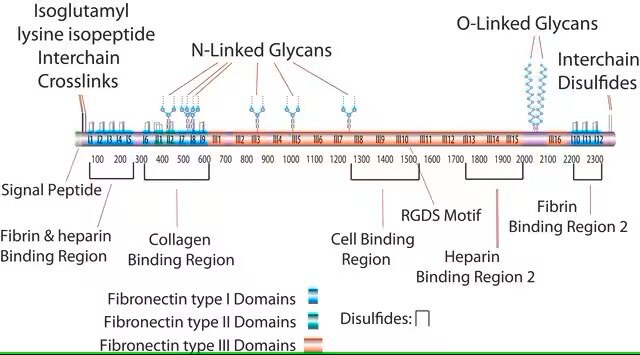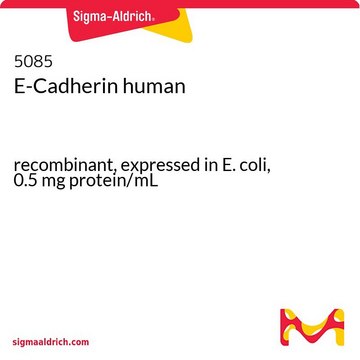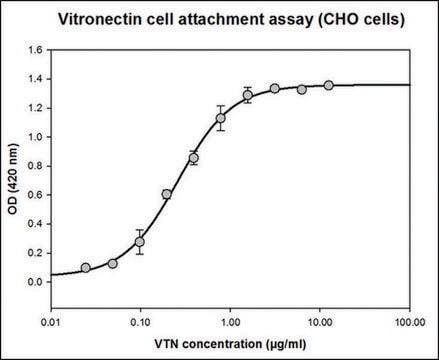ECM001
Human Fibronectin
recombinant, expressed in HEK 293 cells, powder, suitable for cell culture
Synonyme(s) :
Fibronectin, CIG, Cold-insoluble globulin, FN
About This Item
Produits recommandés
Nom du produit
Fibronectine, recombinant, expressed in HEK 293 cells, lyophilized powder, suitable for cell culture
Source biologique
human
Niveau de qualité
Produit recombinant
expressed in HEK 293 cells
Stérilité
sterile
Essai
≥95% (SDS-PAGE)
Forme
lyophilized powder
Poids mol.
259.5 kDa (The protein migrates as a higher band on SDS-PAGE due to glycosylation.)
Conditionnement
pkg of 200 μg
Technique(s)
cell culture | mammalian: suitable
Impuretés
≤1 EU/μg endotoxin, tested
Solubilité
water: soluble
Numéro d'accès NCBI
Numéro d'accès UniProt
Conditions d'expédition
ambient
Température de stockage
−20°C
Informations sur le gène
human ... FN1(2335)
Vous recherchez des produits similaires ? Visite Guide de comparaison des produits
Description générale
Application
Recommended for use as a cell culture substratum at 1-5 μg/cm2 or 0.5-50 μg/ml. Optimal concentration depends on cell type as well as the application or research objectives.
Actions biochimiques/physiologiques
Caractéristiques et avantages
- Human-derived fibronectin
- Produced through recombinant expression in HEK 293 cells
- Low endotoxin levels
- Absence of bacterial contamination
Forme physique
Remarque sur l'analyse
Code de la classe de stockage
11 - Combustible Solids
Classe de danger pour l'eau (WGK)
WGK 3
Point d'éclair (°F)
Not applicable
Point d'éclair (°C)
Not applicable
Faites votre choix parmi les versions les plus récentes :
Certificats d'analyse (COA)
Vous ne trouvez pas la bonne version ?
Si vous avez besoin d'une version particulière, vous pouvez rechercher un certificat spécifique par le numéro de lot.
Déjà en possession de ce produit ?
Retrouvez la documentation relative aux produits que vous avez récemment achetés dans la Bibliothèque de documents.
Les clients ont également consulté
Articles
Attachment Factors for 3-Dimensional Cell Culture
The extracellular matrix (ECM) is secreted by cells and surrounds them in tissues.
Protocoles
Dilute fibronectin to the desired concentration. Optimum conditions for attachment are dependent on cell type and application. The typical coating concentration is 1 – 5 ug/cm2.Fibronectin coating protocol, products, and FAQs.
Notre équipe de scientifiques dispose d'une expérience dans tous les secteurs de la recherche, notamment en sciences de la vie, science des matériaux, synthèse chimique, chromatographie, analyse et dans de nombreux autres domaines..
Contacter notre Service technique









